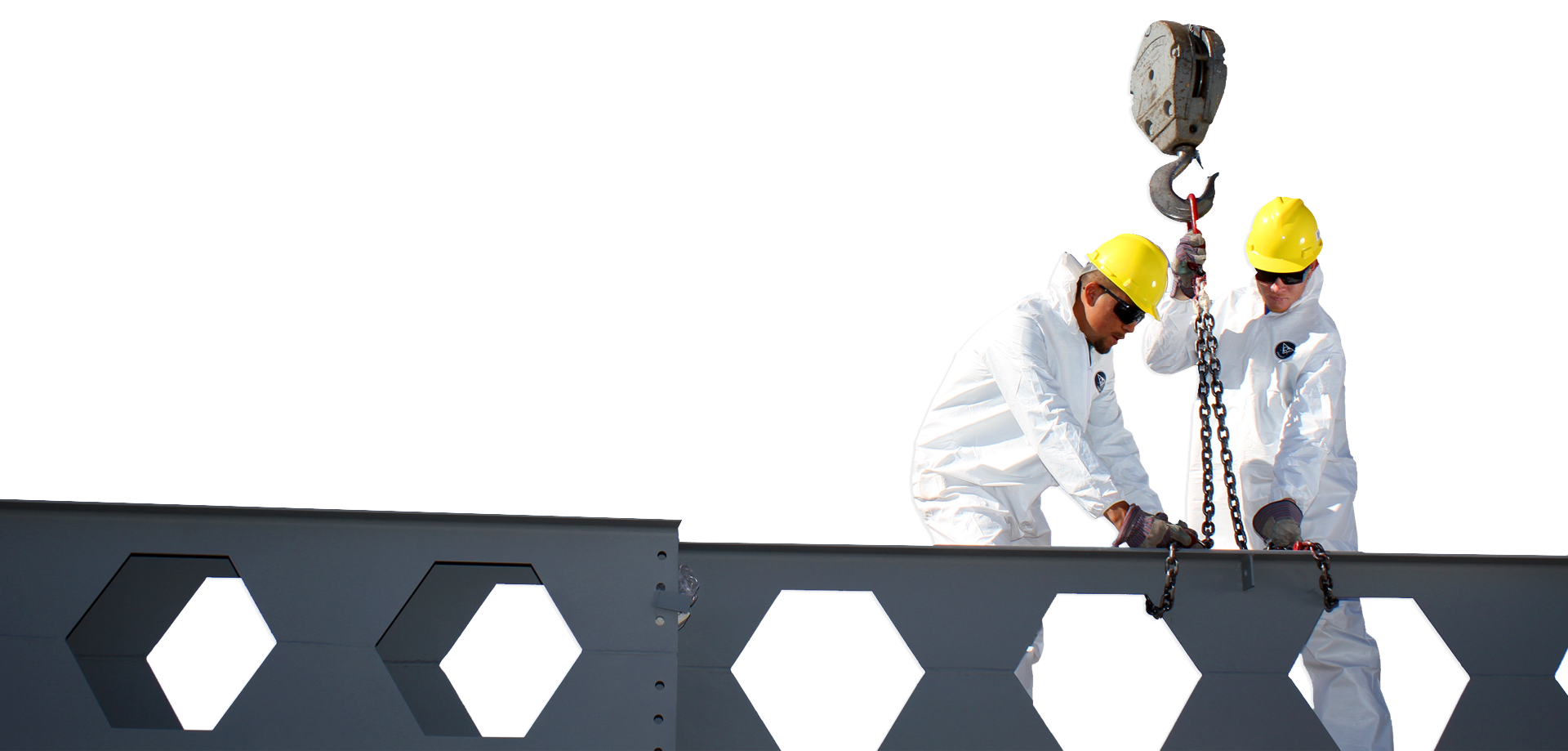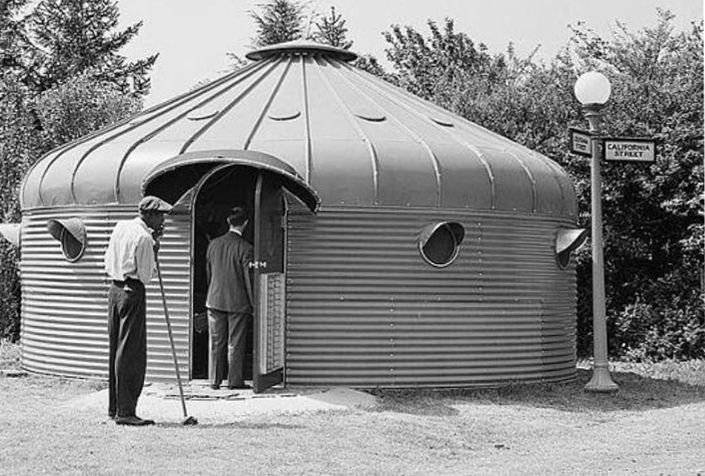
In recent years, Mexico has seen a significant increase in seismic activity with the resulting impact on homes considered to be in a precarious situation. With an estimated 2019 year demand of 550,000 credits for new housing, it becomes extremely important the creation of a scenario producing prototypes of affordable houses with a high structural quality. The use of steel in houses and the experiences obtained show us that it may be an important part in this scenario.
According to the United Nations, through its UN HABITAT body, there are 5 conditions defining Slum Household (UN HABITAT, 2012);
Of these conditions, the first, second and fourth are self-explanatory, taking for granted their referential importance and the processing mechanisms seeking to mitigate them. Given the nature of the subject, we will elaborate on the third and fifth conditions.
On Japanese coasts stone totem poles at a certain height of sea level have existed for more than 100 years with the following legend “High houses are the peace and harmony of our descendants. Remember the calamity of the great tsunamis. Do not build any house below this point” (El debate, 2017). The earthquake and subsequent tsunami occurred in Japan in 2011 revealed two situations, the first, houses above totem poles level were not damaged, and second, many buildings below this level, despite having numerous engineering works for tsunami control, were destroyed.
Since the Mexico origin is as a Spanish colony in America, the concept of a home has since been linked to that of a soil city, that is, with construction materials based on stone and mortar. Sensations perceived with a masonry wall in the Mexican are safety and durability, leaving other aspects such as functionality, thermal insulation, and building speed in second place. A few years ago, when referring to a steel house in Mexico, there was a strong impression that it was a residence with marginal characteristics, associated to an austere hut with steel sheets in deplorable conditions, that is, a precarious home in every sense of the word.
In the United States and Europe, far from this conception of housing, it was easier to visualize a house with materials other than masonry. The existence of huge forests in certain places invited for the development of wooden houses, and strangely, the lack of such resources in locations like Oceania and Greenland, almost forced development of steel as the only relatively light material for transporting and assembling prefabricated houses.
At present, thanks to new conceptions for modern architecture, numerous examples of houses formed with steel profiles of the type IPR, HSS, sheet metal, beams, joist, girders, etc. can be seen, where the use of concrete, glass and wood are also combined, to conceive residences of great complexity, beauty and high levels of safety.
This new rediscovery of steel as a fundamental material for these magazines and competitions houses also helps to exhibit their positive aspects, and results in the opposite effect due to the high cost of final realization.
It is then advisable to take a couple of steps back and look at the prototype’s development for steel houses, as some of the characteristics that contribute to an scenario with steel as a material with excellent properties in the house.
Anderson Refuge
In 1939, a couple of months after the start of the Second World War, thousands of air-raid shelters were built for protection of families under threat of airstrikes on British Land. The Home Affairs Minister, Sir John Anderson, designed what would later come to be known as "Anderson Shelter", which is the first prototype of a house for up to six inhabitants. It basically consisted of a series of vertical galvanized sheets as walls and curved sheets forming the roof and reinforced with iron angles. This structure was set one meter below gardens level and covered with about 50 cm of soil above the roof. The access consisted of a steel panel that served as a door. Approximately two and a half million of these shelters were distributed free of charge to the civilian population, and although these had many defects, they were damp and because of the absence concrete, they could not be adequately reinforced both in the slab and their joints, they exhibited that is possible to manufacture serial structures for houses at very low cost.
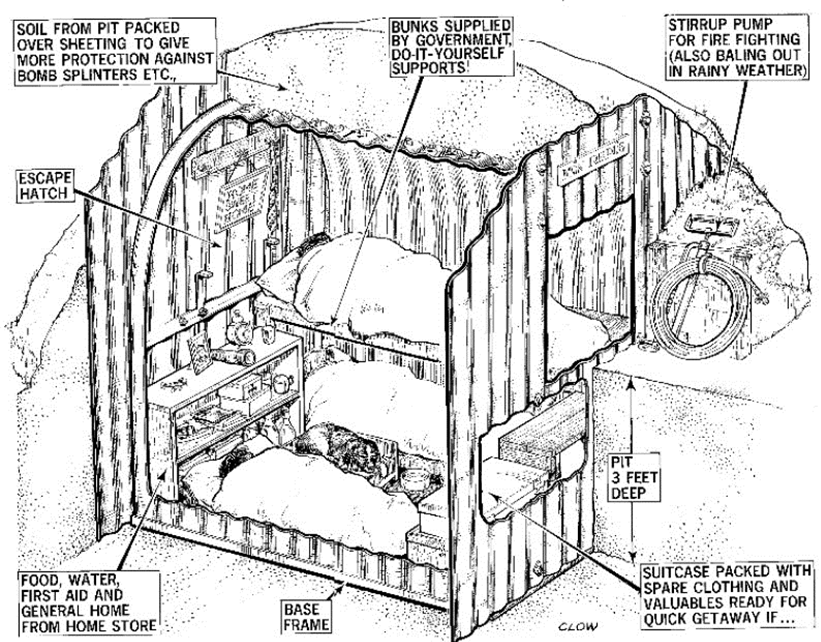
Dymaxion Deployment Unit (DDU)
The Dymaxion house, by the American Architect Richard Buckminster Fuller in 1940, a 20-foot-diameter (6.09 mt) cylindrical prefabricated house built on the basis of corrugated steel sheets placed horizontally as walls, with a roof made of triangular sections ending in an open hood for ventilation and the whole structure supported on a concrete slab. This prototype had internal insulation, drywall panels as interior finish and portholes as windows. With an approximate cost per unit of $ 1,250 at the time, it was economical for its 312 square feets surface. A few prototypes of the original order of 200 pieces requested by the war department still survive today.
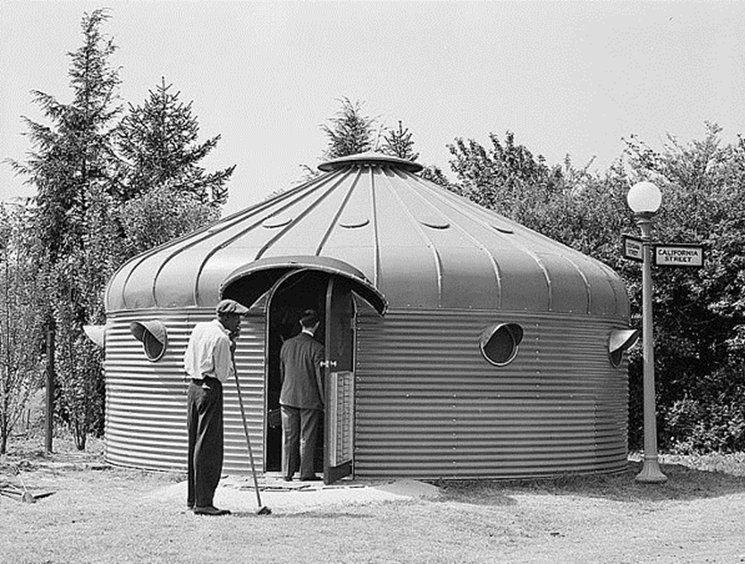
Nissen Cabin, Quonset Shed
During the First World War, the British government began to use a prefabricated multipurpose structure known as an arch-shaped Nissen hut that could be used in military stations such as barracks, dining rooms, offices and ammunition depots. During the Second World War development, the United States Navy took up the concept and began the manufacture of a structure in the form of a barrel vault or a cylindrical arch section covered with corrugated sheet panels, which could be transported assembled and placed in conflict theaters. The use of these structures can be seen in documentaries of the Allied fleet in the Midway Islands, where they were used as low-cost, fast-to-install operational buildings.
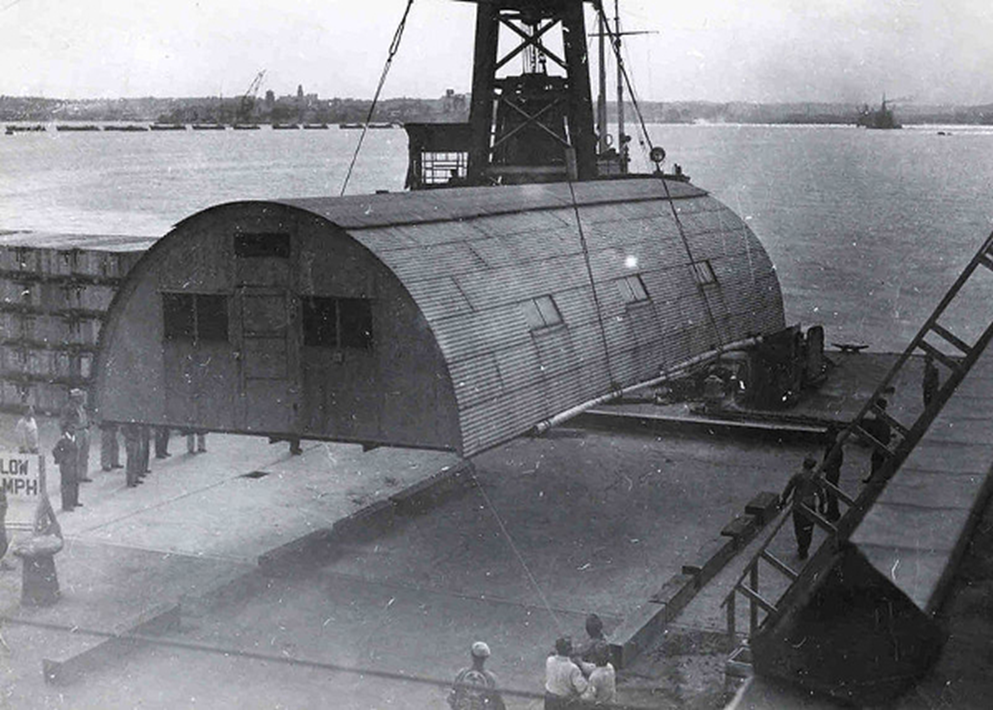
Wichita House
The Wichita house is a housing concept also developed by Buckminster at the end of the Second World War. Similar to the roof concept used by the Dymaxion Deployment Unit, it consisted of triangular elements to form the dome topped by a hood which in this prototype was larger and with a more aerodynamic profile. The walls on the other hand became a mixture of glass, cables and corrugated sheet panels.
The whole set was suspended on a single central post that was the support of the entire structure. Notably, the diameter of this prototype was 36 ft to reach about 1022 square feet of living space, a very convenient area by current housing standards. This model could be assembled by a single person if necessary, receiving in a single metal cylinder all the components and elements necessary for its assembly. Given an economy strongly accelerated by the Second World War, an aviation company was considered to manufacture up to 600,000 units in a year. The price of the prototype house was comparable to that of a car to be paid within a period of up to 5 years. The weight of the entire structure was only 2% of the total weight of a masonry-based home.
Despite the obvious advantages of this type of home, I did not end up being attractive to people as they associated it with a machine more than a house.
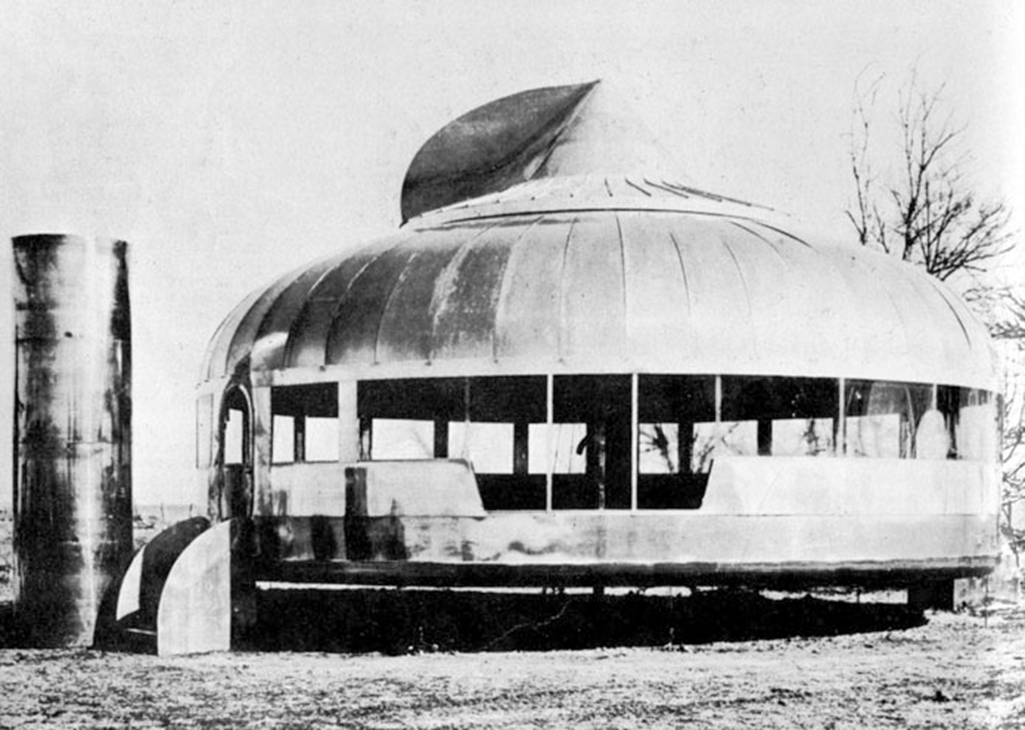
It is evident that these prototypes with greater or lesser success at the time of their conception, provide more than one clue for the creation of a favorable scenario for a new standard of steel housing:
Currently, the use of steel houses is based on cold-formed profiled sections, either aluminum or galvanized steel, as C-sections known as channels or posts. These form frames in 4 ft units to match the arrangement of drywall panels at interiors and durock as exteriors.
In the United States, through institutions such as the “Metal Building Manufacturers Association”, a good level of standardization has been achieved in terms of materials, design processes, connections and assembly of steel houses. These appeal in its final form to a much more traditional architecture than that used in those countries, even though the main structure is actually very different from the original.
Regardless of some subdivisions in Mexico (mainly in the northern states) that are produced using this technology, it will be necessary to make adjustments so that this type of housing is accepted for these new conditions experienced in Mexico.
The use of steel based on cold formed profiles in Mexico is possible and highly recommended to meet demand for housing in the country at the lowest cost. The low structure weight means that seismic impact can be reduced up to 75% of that generated by a housing structure made with traditional materials. In practical terms, it is possible to create highly resistant prototypes in seismic zones, which can further improve these capabilities with minimal adjustments. There must be a process to create prototypes according to geographic location, so that mass production is reflected in a high speed of new home creation.
The image of these prototype steel housing models must be adequate for the national market, so their incorporation into existing houses does not cause any rejection based on perception.
At ESJ, Steel Housing prototypes are currently being developed to suit these markets, considering both the company's experience and the results obtained over time.
